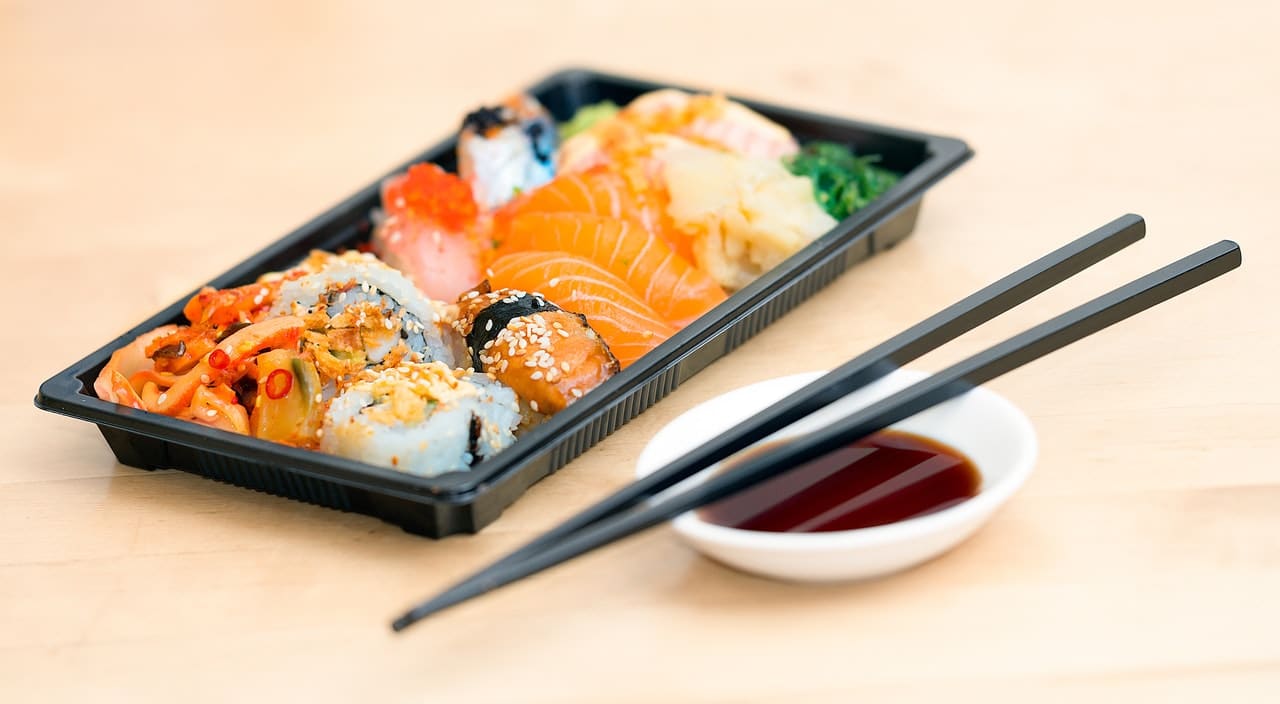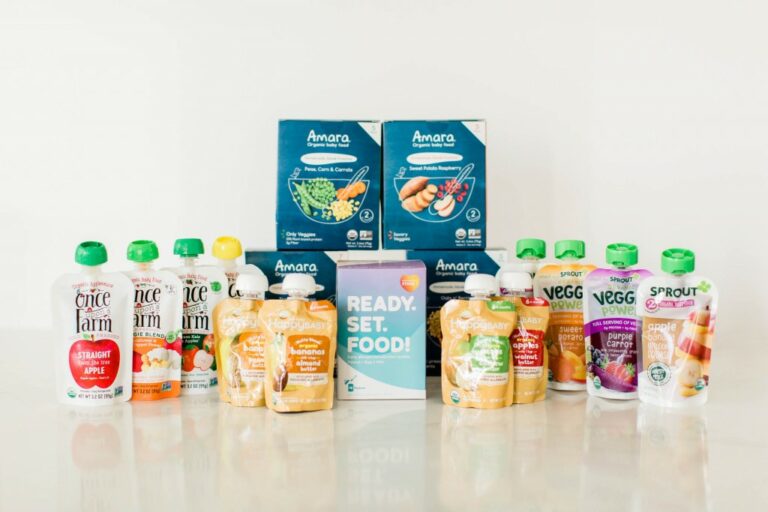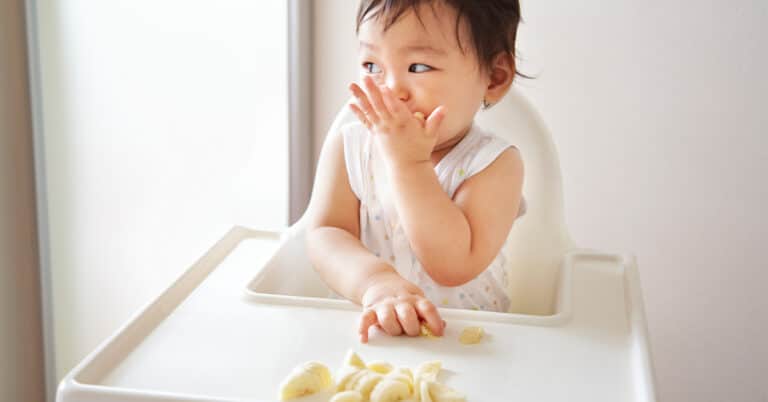Parents are often curious about the right time to introduce goldfish crackers to their babies. This blog post will help you determine when your child is ready to eat this snack. Goldfish are great for kids because they are low in sugar, have whole grains, and contain Omega-3s. They can be a nutritious snack that satisfies picky appetites while also being tasty!
Goldfish should only be given once your child turns 1 year old according to the American Academy of Pediatrics’ food introduction guidelines because before then babies cannot chew them safely. If you have waited until after 12 months but still want something soft for your child’s first solid foods, try mashed banana or avocado instead of goldfish crisps. As well in this blog, we will tell you when Goldfish is good for babies.
In This Article
When can your baby eat goldfish crackers?
Though goldfish crackers are not recommended for infants under one year old. If your baby is older than six months and has enough teeth, they can try a canned tuna fish. For most babies, doctors recommend waiting until 9 months to introduce fish (like sole or salmon) and 12 months before trying shellfish (like shrimp, clams, and lobster). However, if your doctor has recommended introducing fish to your baby after than 12 months, you can try Goldfish at this time.
As a parent, you’ll want to offer a variety of healthy foods to your baby, and that includes fish. As your baby gets older, he or she will need more protein for growth and development. Fish is a great source of lean protein as well as other important nutrients like omega-3 fatty acids, vitamin D, and selenium.
Goldfish produce plenty of nutrients that can help your child grow up healthy. The fish graham crackers often have a light child’s favorite flavor are suitable for most them. As well, you want to consider the nutritional value goldfish offers. They contain whole grains, low sodium content, and very low sugar content.
When your baby turns 2 years old, they are ready to eat goldfish. This processed snack is often fortified with vitamins and minerals that can help them grow. But don’t give them baby goldfish crackers, go for regular goldfish instead. A Goldfish cracker are available in many flavors, so it’s easy to find one that your baby will enjoy. Your child may even be old enough to try the cheddar cheese flavor too. It does contain real cheese and can be given to kids aged 3 years old.
What is the best fish for babies?
The best fish for babies is salmon, it is a good source of protein, vitamin B12, and omega-3 fatty acids. Omega-3 fatty acids are important for the development of the brain and nervous system. They may also help protect against heart disease and cancer. Salmon can be cooked in many ways, so it is a versatile choice for your baby. You can bake, broil, grill, or poach salmon. For babies handle chewing crackers and other solid foods can be introduced after 6 months.
Another good fish to feed your baby is trout. It is also a good source of protein and omega-3 fatty acids. Trout can be cooked in the same ways as salmon. If you are looking for a lower-fat option, you can always try canned salmon or trout. These are also good sources of omega-3 fatty acids, but they have less fat than fresh fish.
However, older children should eat all types of fish. They can get protein, omega-3 fatty acids, and vitamin D from many types of fish. Some good choices are tuna, cod, and flounder. These fish can be baked, grilled, or broiled. They are also a good source of selenium, which is important for the immune system. Fish can be included in junk food but not always. For your baby classic snack avoid baby goldfish crackers and giving light crackers instead of anything else.
What is the best way to introduce goldfish crackers?
There is no one-size-fits-all answer to this question. As the best way to introduce goldfish crackers to babies may vary depending on the baby’s age and preferences. However, some parents may choose not to give their babies goldfish crackers as a first food, as they are choking hazards.
With such a wide variety of baby goldfish crackers with so many different ingredients. It’s good to know what the potential safety concerns are and which ones you should be watching out for. If you do give goldfish crackers to your baby, we recommend that you follow American Academy of Pediatrics guidelines and introduce them slowly. Goldfish crackers may not be the first food that babies try, but they are a popular favorite.
The biggest potential danger of goldfish crackers for infants has to do with choking. And if your baby eats goldfish crackers accidentally, it’s important to know how to help them if they start choking. Parents need to be aware of the choking hazard of goldfish and other small foods and keep them out of reach. A high amount of goldfish should not recommend for any child younger than four years old.
Tips we should know
Here are some important goldfish crackers eating guidelines for parents and they are:
- Always supervise children when eating any type of food, including crackers.
- Goldfish crackers are a choking hazard for children younger than 4 years old.
- If your child eat goldfish crackers often or if your kid has a medical condition or food allergy, you should discuss with the child’s doctor about introducing goldfish crackers to their diet.
- Goldfish crackers are full of preservatives and artificial colors so we avoid giving them before 1 year old as well.
- Avoid giving your child too many goldfish crackers as a snack.
- Place a limit on the amount of time your child can spend eating goldfish crackers.
- Make sure that your baby is also eating other types of food including whole grains, fruits, and vegetables.
- Avoid eating baby goldfish crackers as they are high in sodium.
- Don’t feed milk after eating graham crackers.
- Try not to overdo it with butter or salt.
- Let your kid know that they should eat slowly and chew their food properly.
- Discourage them from eating goldfish crackers in bed.
- Explain to them that too much sugar isn’t good for their teeths or their overall health.
The Conclusion
As you can see, there are many perspectives on when babies should be introduced to goldfish. The best answer is that it depends on the baby’s readiness for solids and what your doctor says about introducing new foods in general. If you have any questions about whether or not your baby will be ready for solids soon, talk with a pediatrician who specializes in feeding issues before proceeding.
Therefore, there are many factors that come into play when considering whether or not it’s safe for a baby to eat goldfish such as the age of the child and how often they’re eating them. It can be difficult to know what food your child will like, but if you do notice any physical changes in their health after adding goldfish (or other foods) then we recommend removing those from their diet immediately.











